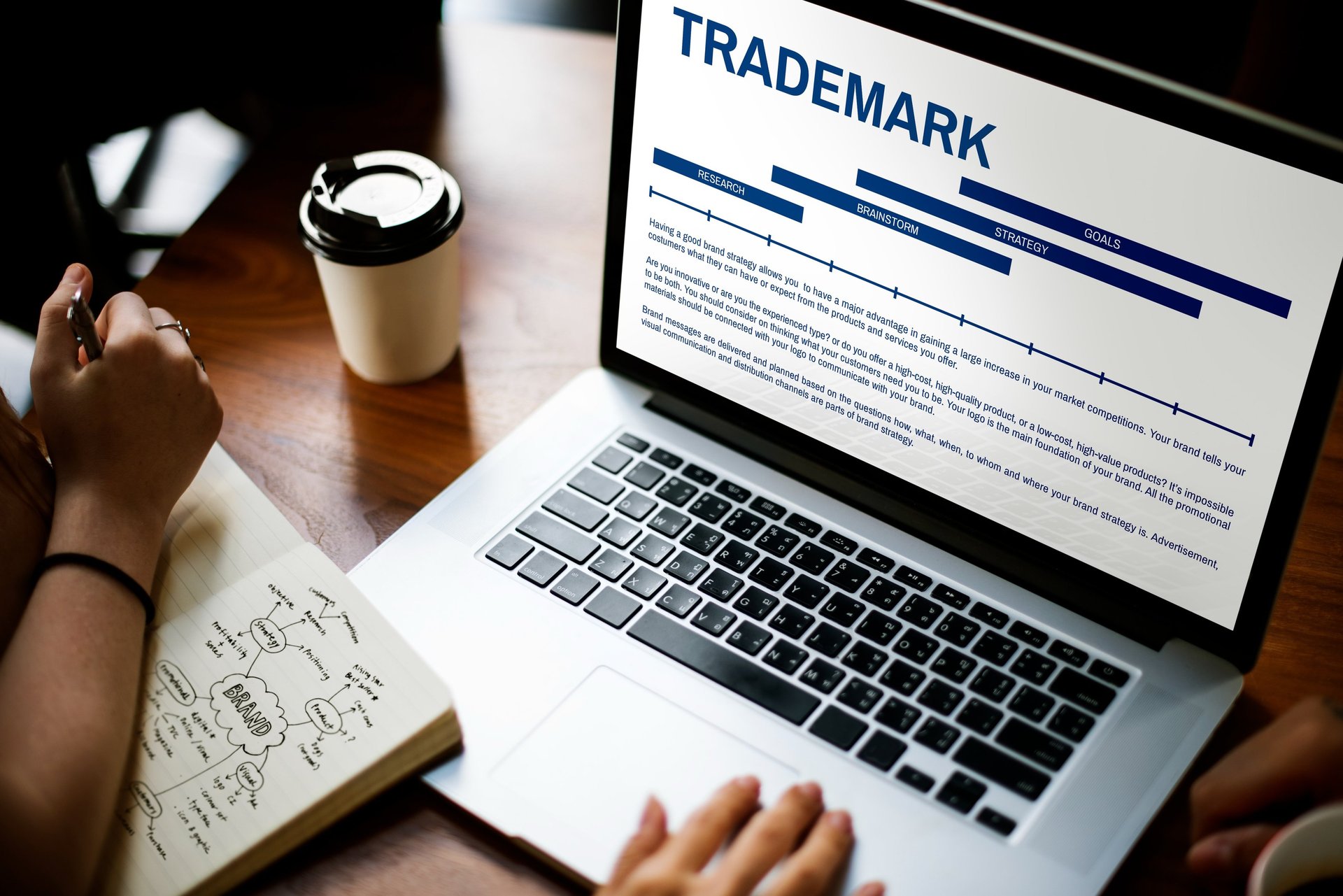
Sentre Legal Solutions
Trademark Registration Process
Initial Consultation
Assess the eligibility of your trademark and provide recommendations on the appropriate classification for registration.
Preliminary Search
Conduct an initial review to ensure that your proposed trademark does not conflict with existing registered trademarks.
Application Preparation and Submission
Draft and file your trademark application with the Directorate General of Intellectual Property (DGIP).
Monitoring and Response Handling
Monitor the application process and manage any objections or refusals that may arise.
Trademark Certificate Issuance
Receive the official trademark certificate upon approval of your application.
Trademark Renewal and Maintenance
Ensure ongoing protection through timely renewal and maintenance of your trademark right
Why Register a Trademark?
Legal Protection
Prevents others from using your brand name or logo.
Brand Recognition
Establishes credibility and trust in the marketplace.
Exclusive Rights
Gives you the sole right to use your brand in your industry.
Business Growth
Increases the value of your business and attracts investors.
Trademark Registration Requirements for Individuals
A copy of the applicant’s National Identity Card (KTP)
Full name and address as stated on the Identity Card
The logo/trademark to be registered in JPG format, with a resolution of 150–300 DPI and a maximum size of 9 cm (maximum 1000 pixels) in both height and width
Trademark Registration Requirements for Legal Entities
Copies of the National Identity Card (KTP) and Taxpayer Identification Number (NPWP) of company directors and shareholders
Copies of the Deed of Establishment of the company and any subsequent amendments
Legal entity name as stated in the Deed of Establishment
Legal entity address as stated in the company’s domicile documentation
The logo/trademark to be registered in JPG format, with a resolution of 150–300 DPI and a maximum size of 9 cm (maximum 1000 pixels) in both height and width
Important Notes
If an objection is raised against the trademark application, the applicant is required to submit a rebuttal or response. This process must be completed within a maximum of 2 months from the date the objection notice is received.
In the event that the trademark application is rejected by the Directorate General of Intellectual Property (DGIP), the applicant may submit a formal response or argument against the proposed rejection. This response must be filed within a maximum of 30 days from the date the rejection notice is issued.
Your brand is one of your most valuable assets. Securing a trademark ensures exclusive rights to your business name, logo, or slogan, preventing unauthorized use by others. Our expert trademark registration services guide you through the entire process, making it seamless and hassle free.
Class Selection in the Trademark Classification System
Selecting the appropriate class during the trademark registration process is a critical step to ensure your trademark is properly protected. Each class corresponds to a specific category of goods or services covered under the trademark. An incorrect class selection may result in inadequate protection or potential legal conflicts in the future.
Trademark classification follows an internationally recognized system known as the Nice Classification, which consists of 45 classes:
Classes 1–34: Goods (e.g., Class 25 for clothing, Class 30 for food and beverages)
Classes 35–45: Services (e.g., Class 35 for business services, Class 42 for technological and scientific services)
Frequently asked questions
What is a Trademark?
A trademark is a sign that can be graphically represented in the form of images, logos, names, words, letters, numbers, color combinations, in two-dimensional and/or three-dimensional form, as well as sounds, holograms, or a combination of two or more of these elements. It serves to distinguish the goods and/or services produced by an individual or legal entity in the course of trade in goods and/or services.
Why is Trademark Registration Important?
Serves as legal evidence of ownership for the registered trademark holder
Provides a basis for rejecting the registration of identical or substantially similar trademarks filed by others for similar goods or services
Establishes a legal foundation to prevent unauthorized use of identical or confusingly similar trademarks by others in the trade of similar goods or services
What Are the Criteria for a Registrable Trademark?
A trademark may be registered if it does not:
Contradict the state ideology, laws and regulations, morality, religion, decency, or public order
Be identical to, directly related to, or merely describe the goods and/or services for which registration is sought
Contain elements that may mislead the public regarding the origin, quality, type, size, nature, or intended use of the goods and/or services, or that constitute the name of a protected plant variety for similar goods and/or services
Contain information that is inconsistent with the actual quality, benefits, or effectiveness of the goods and/or services
Lack distinctiveness
Consist of generic names and/or symbols belonging to the public domain
How Long is the Legal Protection for a Registered Trademark?
A registered trademark is granted legal protection for a period of 10 years from the filing date of the trademark application and is renewable upon expiration.
What Can Cause a Trademark Application to Be Rejected?
A trademark application may be rejected if it:
Is identical or confusingly similar to an existing registered or well-known trademark
Resembles a well-known trademark for different goods/services under specific conditions
Is similar to a recognized geographical indication
Uses the name, photo, or legal entity name of another party without consent
Imitates national/international symbols, flags, or emblems without proper authorization
Resembles official government marks, stamps, or seals without permission




Sentre Legal Services
Expert legal and tax solutions for your business.
Contact US
Consultation
+6281399494456
© 2024. All rights reserved.
